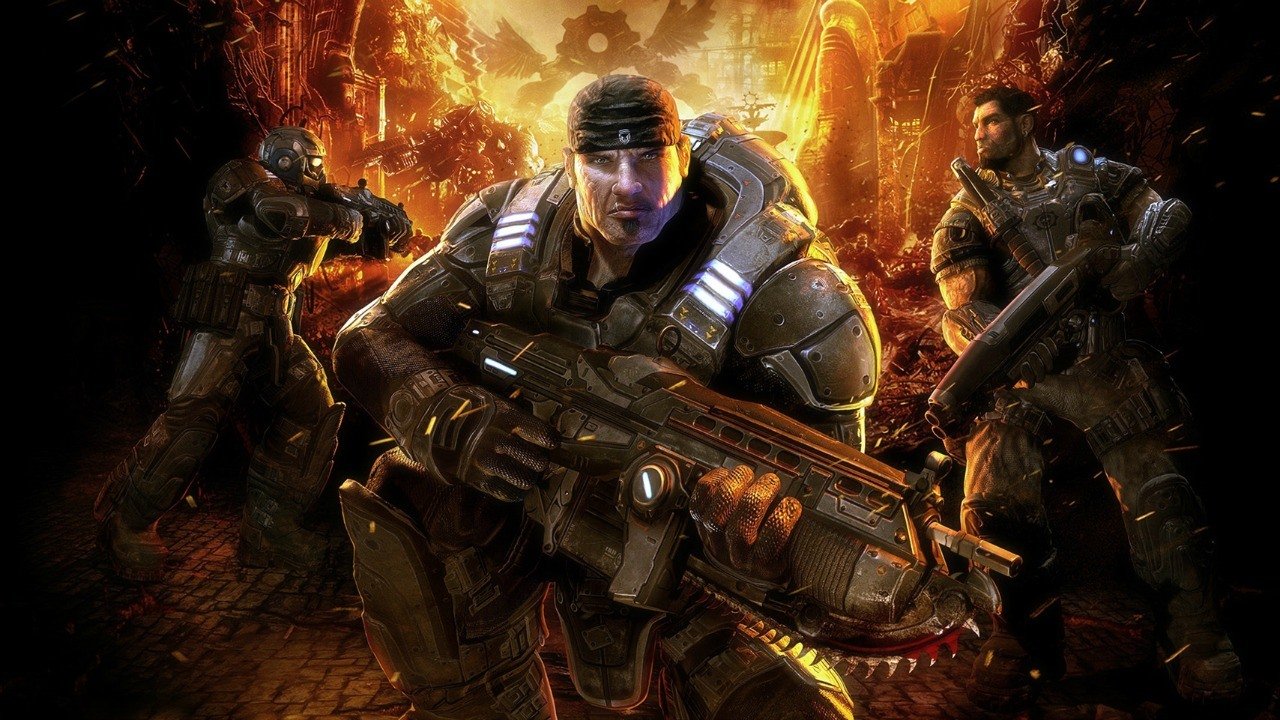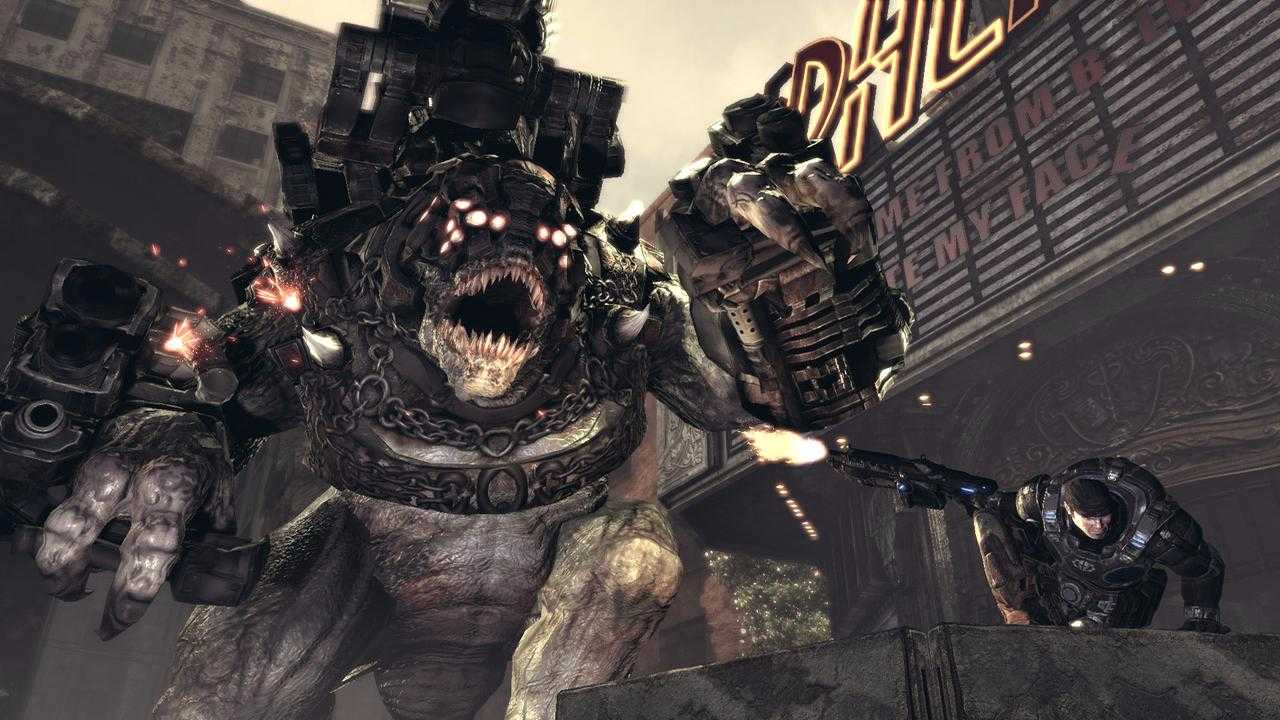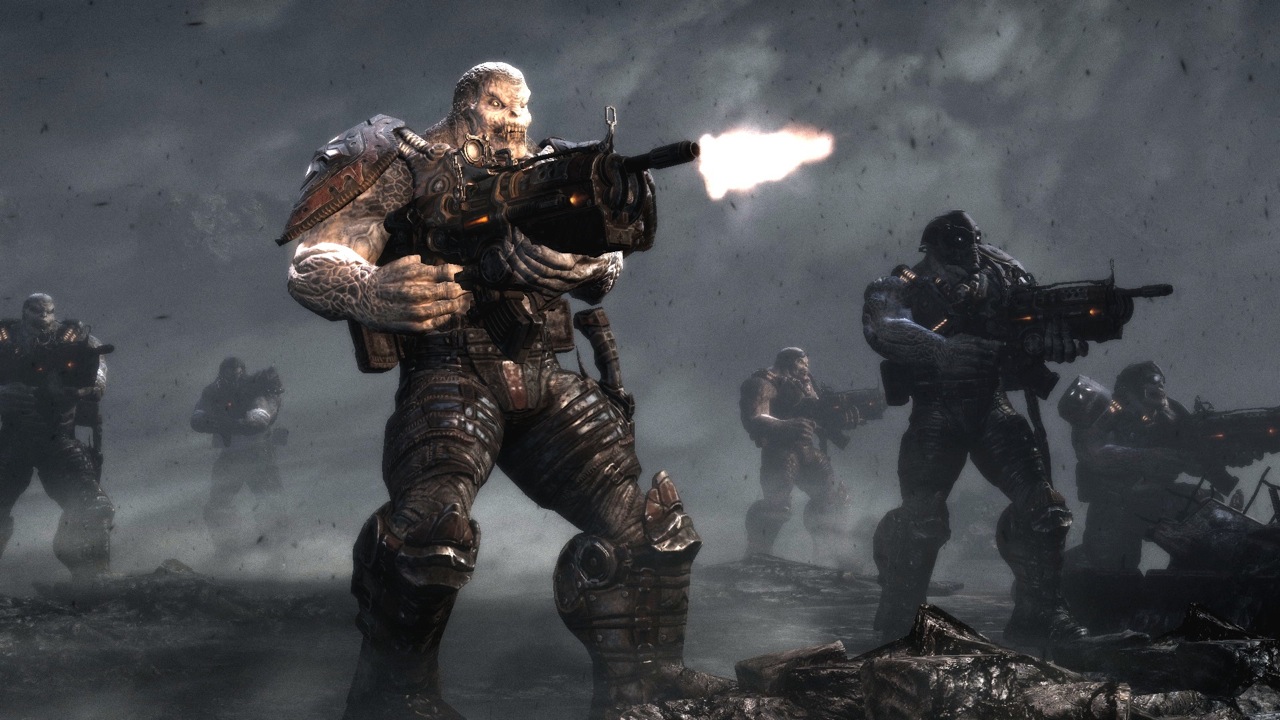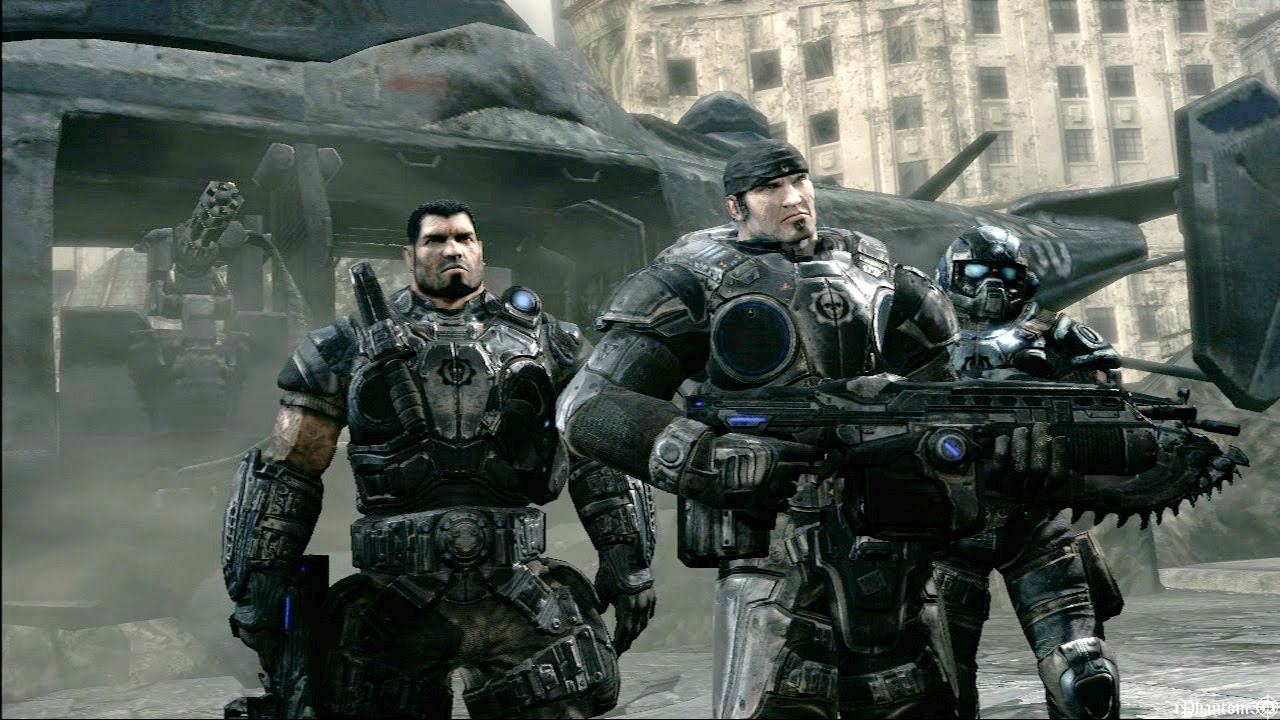"Still the best opening of all time": Developers look back on Gears of War, the shooter that kickstarted a bold, new era of console gaming
Looking back on the game that started it all

Sometime in 2005, Gary Napper – now Game Director at Supermassive Games – was walking through the offices of EA Bright Light when he noticed a group of colleagues crowding around a desk, mesmerised by something on a screen. "The designers had huge smiles of wonder on their faces," he recalls.
"The artists all had looks of dread. Some were shaking their heads, others had their arms folded with stern expressions. This was my first ever look at Gears of War. It was gameplay footage, pre-release, and showed a world in the dark with rain drenching every surface, as chunky armoured soldiers ran in a low crouch while lightning flashed around them. I was astounded."
Ten years later, it’s easy to forget the impact Gears of War's graphical technology and aesthetic had on other studios – the tortured photorealism of its landscapes, the muscular heft of its characters. "I heard the artists talking and it was quickly established that this was the visual quality we had to beat," Napper goes on. EA Bright Light’s project at the time, an adaptation of Harry Potter and the Order of the Phoenix, underwent "huge changes" to make the grade.
A major exclusive for the emerging Xbox 360, Epic’s new shooter would prove no less electric in the hands, however familiar its mixture of cover-hugging and peek-shooting may have sounded on paper. "The moment- to-moment feel of the game was so new and unexpected," muses Napper. "The chunkiness to the weapons and the feedback of the environment made the world feel alive."
A new era emerges

Adrian Chmielarz, creative director at The Astronauts and one of the minds behind the seminal Bulletstorm, was similarly taken aback. "I thought it was going to be just graphics and production values. I wasn’t entirely convinced about the gameplay. Once I actually did play it? Oh my God."
Even those who didn’t warm to the game’s tone and universe were impressed by it. "It's not a series I had any great affinity for," confesses Dan Marshall, founder of BAFTA award winning indie studio Size Five Games. "It’s a dank grey slog through depressing environments and hard-work firefights. It’s sci-fi trench foot and hopelessness. But it did those things brilliantly."
In terms of its handling, Gears of War is hardly a true-blue original. Many of the game’s inspirations were obvious from the beginning: Capcom’s Resident Evil 4, cult favourite Kill.Switch and Epic's flagship Unreal series. But Gears shines, first of all, in the confidence and grace with which it unifies the efforts of different development disciplines.
Sign up to the GamesRadar+ Newsletter
Weekly digests, tales from the communities you love, and more
"Character art, animation, audio design, voice direction, systems design, and even small touches like well-timed camera shakes – when all these disparate pieces came together, the vision came to life," says Volition’s Greg Donovan, Senior Producer at Zenimax Online Studios. "This was the first time for me that so many disciplines had come together to sell characters so well."

“The designers had huge smiles of wonder, but the artists had looks of dread."
There were also flashes of real innovation amid the muck and thunder of the gunfights. Take Active Reload, whereby you can hit a button to accelerate the reloading animation and increase damage per round. Mistime the press, however, and you’ll have to sweat while your character struggles to fit a magazine into the breach.
"It took an input that was almost standard in games of that time and turned it into an emotional experience," says Napper. "There was a huge feeling of risk and reward – excitement and panic within a moment of gameplay that had become almost routine." Looking at the fabric of the campaign as a whole, Chmielarz feels there's still plenty to learn from Gears’ pacing. "The opening segment is probably still the best opening of all time when it comes to teaching the rules of play without being obnoxious about it," he says.
Donovan agrees. "The devs introduced enemies in a manner that prevented stagnation while ramping up difficulty," he reflects. "By the end it felt like I was fighting against ten-plus distinct enemy types, which is a crazy amount of content to take on and do well, and there’s probably more than ten. But I also felt like I had the tools to be competitive against them. The final levels were a nice balance between having a challenge and feeling powerful, and that’s difficult to pull off."
Truly influential

Gears of War's impact on the Xbox 360's early fortunes has been exhaustively rehearsed. Relatively little understood, perhaps, is how it reshaped the role of the game designer within studios. "Gears changed so much about what our jobs actually meant," comments Lee Perry, lead designer at Epic from 2001 to 2012. "We had this awesome new tool, Kismet. It was like Photoshop, for bringing playable ideas to life. We didn’t have to try to convince programmers and producers to let us try different things, we could just open the editor up and make things work on our own."
"For me, that changed everything about my job. For the first decade of my career I was basically an artist, modelling things, trying to come up with systems for how they would fit together. I was firmly in the back seat, hoping the people at the wheel were taking the projects somewhere cool. Once Kismet landed, my job became making playable prototypes for creatures, weapons and systems."
External developers were able to use the tool by licensing the Unreal Engine. Napper was among those who felt the benefits. Years after seeing Gears for the first time, he met Epic’s legendary design director Cliff Bleszinski at an event and thanked him not just for Gears itself, but for raising the profile of designers within the industry. "I remember a time when only producers and PR people were allowed to talk to press about the games we were working on, and then all of a sudden, here was this designer, openly talking about his love of the game."
This article originally appeared in Official Xbox Magazine. Pick up the latest copy in stores now, or subscribe so you never miss an issue.


